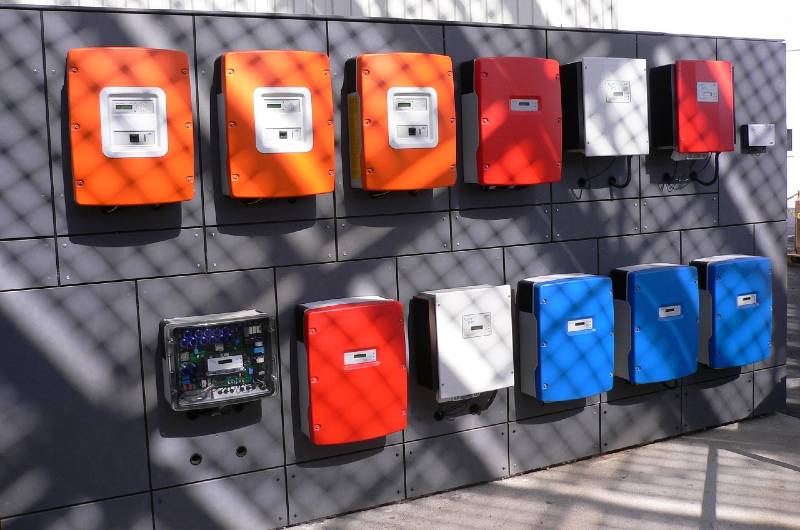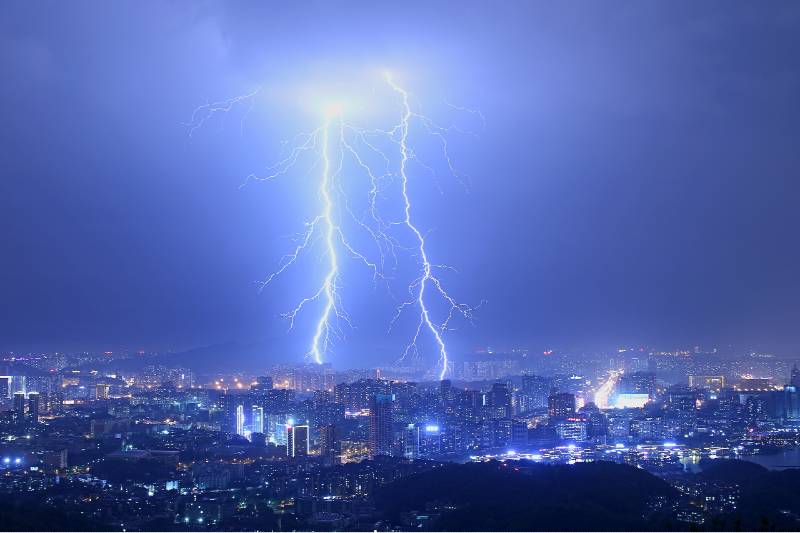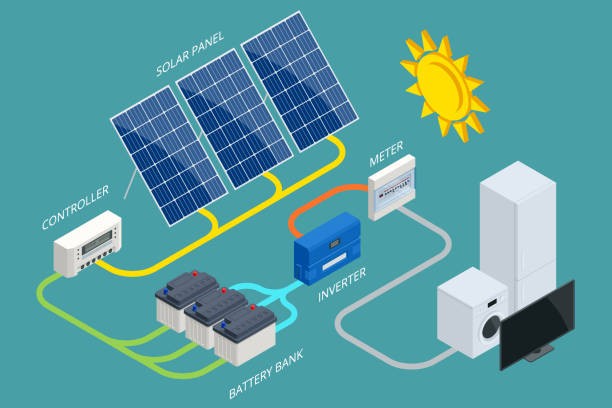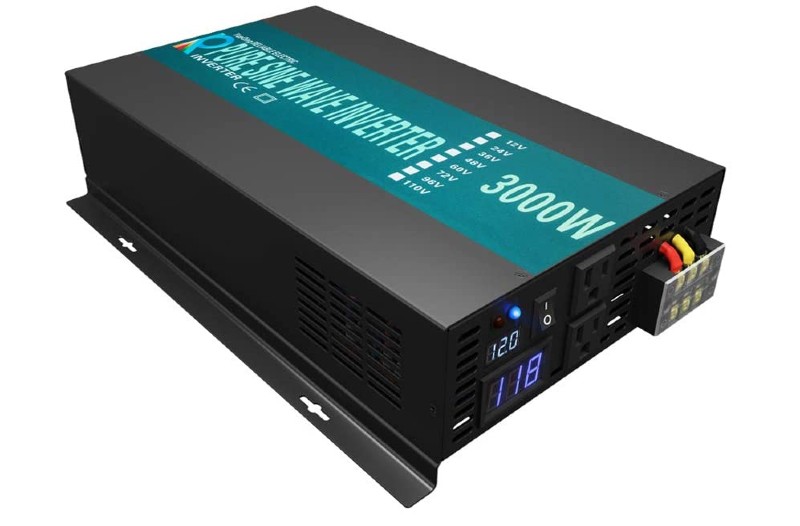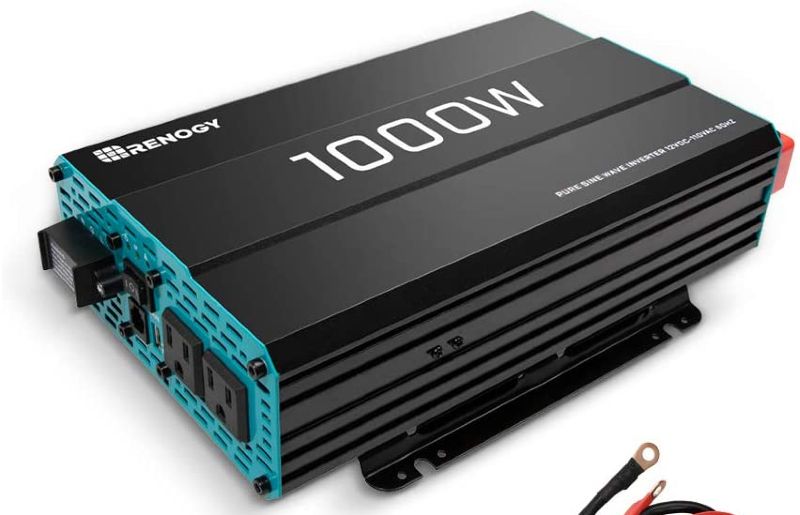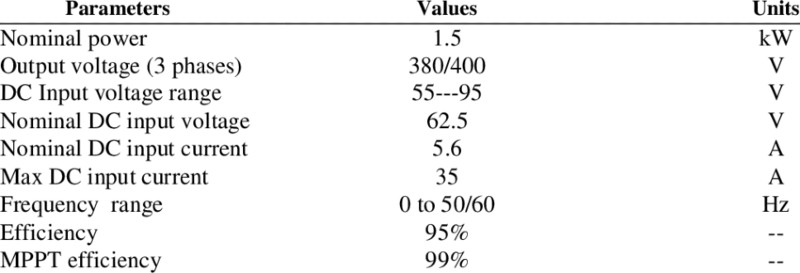The solar inverter is what converts the DC power from your solar panels to AC power for use in your home.
Many of these inverters have a negative ground feature that can be very useful, but it’s important to know what the function of this feature is before using it.
In this article, we’ll discuss what is negative grounding in solar inverter, which is better negative or positive grounding, and how you can take advantage of its benefits.
What Is Grounding In Electricity?
Grounding or earthing is what provides an electrical circuit with the path to dissipate excess voltage, which increases the safety of the circuit.
In a normal household electrical system, what we think of as “ground” is actually what’s called earth ground.
This refers to either a metal rod driven into the dirt or some other connection with the earth outside your house that provides a path for electricity to dissipate from your home if needed.
This is what protects you and your appliances from damage due to excess voltage.
Related article: How To Read Solar Inverter Specifications?
Grounding In PV System
When it comes to solar systems, what we think of as ground may not be what’s best for the system itself.
The negative grounding feature aka negative pole allows the solar inverter to use a separate circuit with its own earth ground that does not connect back into your home’s electrical system.
This is what protects your appliances from damage due to excess voltage in the solar circuit, but it also allows for any of that excess voltage to dissipate out of the inverter and be used by other parts of the utility grid.
So this negative pole can actually help you get paid more money when selling back your energy to the grid.
Related article: Can You Connect An Inverter Directly To A Solar Panel?
Which Is Better Negative Or Positive Grounding?
The difference between negative and positive grounding is what the inverter connects to for an earth ground.
In simple terms, negative grounding means that the negative terminal is referenced to the earth while in positive grounding the positive pole is referenced to the ground.
Related article: Can A Solar Panel Work Without An Inverter?
Why Do I Need To Ground My Solar Inverter?
Whether you have negative or positive grounding, what it comes down to is what your inverter needs for safety purposes.
Your solar installer will likely wire up the system with whatever grounding method they feel is best suited for your home and what’s required by code in that area.
If you ever need to modify this wiring, make sure not to change what’s called the neutral side of things.
This is what protects you and your appliances from damage in case there’s a short circuit or other problem with the solar inverter that requires it to be unplugged.
The negative grounding feature, when used properly, can actually help pay for itself by increasing how much renewable energy your solar pv sends to the utility grid compared to the ungrounded system.
Negative grounding is what allows the inverter to use a separate earth ground that does not connect back into your home’s electrical system, what protects you and your appliances from damage due to excess voltage in the solar circuit, but also what helps dissipate any of this extra power out of the inverter so it can be used by other parts of the power grid.
Now that you understand what negative grounding is and how it’s beneficial, you can make sure your solar inverter has this function to help increase its functionality.
Related article: How To Protect Your Solar Inverter From Lightning?
How To Set Up Negative Grounding In A Solar System
If you have a solar inverter with this feature, it’s very easy to set up and use.
First, what you want to do is find the ground terminal on your solar inverter – usually there will be two terminals labeled “G” or “N”, with one being ground.
The negative terminal will be what you want to use for this feature, so just attach a wire from that point on the inverter directly to your metal grounding rod or any other connection outside your home where it can connect back into the earth.
If there is no option like this available, then what you can do is run a wire from the inverter to what’s called an earth ground block, which will allow it to connect with your home’s electrical system.
This should be installed by someone who knows what they are doing so that there won’t be any problems or safety concerns. You’ll also want to make sure this gets connected to the grounding rod or outside connection as well.
After this is done you will be able to use your solar inverter’s negative grounding feature and it won’t affect what happens with your home circuit breaker, since it isn’t connected back into that system.
This can help protect appliances from damage due to excess voltage in the solar circuits and help you get paid more for what your system produces by being able to send energy back into the utility grid.
Last Words
Now you can see what negative grounding in solar inverter is, what it does and how to use it.
As always, if you have any questions or concerns about this feature don’t hesitate to ask us at Solar Energy Hackers! We’re here for all your solar needs.

